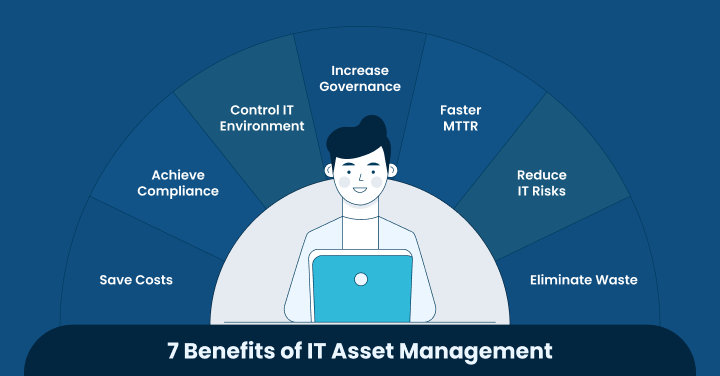Starting a business requires investing in fixed assets like land, buildings, equipment, etc. Have you ever wondered what happens when these assets turn old or outdated? Further, why should you never dispose of these capital assets or fixed assets without a proper strategy?
Asset Disposal is a critical aspect of asset management that involves the systematic removal of outdated assets from the balance sheet. This process ensures that businesses maintain operational efficiency while maximizing value from outdated assets.
Whether it involves selling, recycling, repurposing, or decommissioning assets, proper disposal is essential for maintaining an organization’s financial health, security, and meeting regulatory requirements.
As businesses grow and evolve, they continuously acquire and replace assets such as equipment, machinery, vehicles, and technology.
However, improper disposal of assets can lead to financial losses, data breaches, and legal consequences, making it crucial for organizations to develop and implement structured asset disposal strategies.
Poorly managed asset disposal can result in unnecessary costs, storage inefficiencies, and lost opportunities for financial recovery. Many assets, even after they have outlived their useful life, retain residual value that can be recovered through resale, trade-ins, or recycling.
However, if you go with improper disposal of electronic assets, you might have to bear serious security risks, as outdated devices often contain sensitive corporate data. If not handled properly, such data can be accessed by unauthorized parties, leading to breaches, identity theft, or reputational damage. By implementing secure disposal methods, organizations can prevent data leaks and safeguard intellectual property.
There are more benefits associated with the disposal of an asset in the right manner. In this blog, we will discuss asset disposal in detail, the impact of improper disposal, and best practices that an organization must follow for effective disposal. Further, we will highlight how IT Asset Management Software plays a crucial role in disposal.
Understanding Asset Disposal
During the commencement of business, companies invest in a wide range of assets, including property, IT equipment, office furniture, vehicles, machinery, etc., for smooth operations. But there comes a time when these assets reach their lifecycle within the organization.
Disposing of these assets that are no longer useful for business, especially old or outdated ones, from business records is referred to as asset disposal.
Many companies practice this concept to optimize asset management, free up space, and avoid risks associated with underperforming assets.
Further, implementing proper disposal strategies can help businesses prevent data breaches, improve financial stability, risk management, enhance operational efficiency, and reduce unnecessary storage costs.
Some of the common types of assets that organizations dispose of include IT Hardware (computers, networking equipment, servers, etc.), industrial equipment and manufacturing machines, office supplies, furniture, and fixtures.
The asset disposal process isn’t just about throwing things away; it includes making careful choices for future business needs. In fact, multiple stakeholders play a key role in asset disposal for better efficiency and value optimization.
For example, executive management oversees the disposal strategy, the financial team handles asset valuation, depreciation accounting, and financial reporting, IT and data security teams ensure that sensitive data is securely erased or destroyed before disposing of IT assets.
By involving the appropriate stakeholders for each task, an organization can execute asset disposal efficiently.
The Business Impact of Poor Asset Disposal
Asset Disposal is an important process that organizations often overlook while managing other tasks. Failing to manage asset disposal can result in financial and legal issues. Here are some key impacts of poor asset disposal:
Financial losses due to unmanaged disposal
Organizations often store spare equipment or machinery in warehouses for future needs. What they miss out on is after a period, these spare or unused equipment turn outdated. This may lead to space utilization, maintenance costs to recoup investment costs and administrative overhead.
Recovering residual value from outdated assets also becomes a challenge if the asset is not disposed of at the right time. Some organizations choose to dump these assets in landfills, resulting in hefty fines from regulatory authorities – an additional operational cost.
Security and data breach risks from improper IT asset disposal
Business hard drives, servers, mobile devices, and other assets carry sensitive business and customer data. Disposing of these assets without thinking can result in financial and reputational damage. Further, if any unauthorized user gains access to these assets, the chances of fraud and identity theft are high.
Regulatory Compliance and legal implications
Businesses must comply with data protection laws such as GDPR (General Data Protection Regulation) and HIPAA (Health Insurance Portability and Accountability Act) when disposing of assets containing personal or sensitive data as non-compliance may lead to penalties.
Further, improper disposal of electronic assets can violate environmental regulations. In such cases, organizations can also face legal issues.
Best Practices for Effective Asset Disposal
To avoid risks associated with improper IT asset disposal, businesses should follow the below-listed best practices.
Further, these practices help businesses run smoother operations, reduce risk, and get the most value from their assets throughout their lifecycle. Some of the best practices for effective asset disposal include:
1. Developing an asset disposal policy
Developing a well-defined asset disposal policy enables employees and team members to gain clarity on the objectives of asset disposal, compliance requirements with environmental and financial regulations, and approval processes. The policy further includes the different disposal methods that will be practiced.
Organizations must review these policies regularly and ensure they align with industry standards and legal frameworks to avoid regulatory penalties.
2. Categorization and assessment of assets before disposal
Categorizing assets and keeping an up-to-date inventory allows organizations to make better decisions related to disposal methods.
For effective management, it is best to keep an account of all asset details, including their date of purchase, age, condition, depreciation value, etc., in a common folder. Assessment of this crucial information helps the organization determine whether the asset needs to be resold, recycled, or destroyed.
3. Choosing between resale, recycling, donation, or destruction
One can determine which disposal method is best for their asset only after evaluating their current condition. Reselling assets works best in case of materials such as metals, plastics, and electronics. These assets reduce environmental impact as well as help recover costs while extending their lifecycle.
Organizations can also choose to donate assets to non-profit organizations. In some cases where assets are no longer useful, destroying them can be the right option.
It is important to make sure that the decision is based on an organization’s financial, ethical, and sustainability considerations.
4. Ensuring secure data erasure for IT assets
Data leakage or intellectual property theft during asset disposal is common. Hence, to prevent unauthorized access to your sensitive information at the time of disposal, invest in certified data erasure software.
Contact certified vendors for secure IT asset disposal to avoid data exposure. Further, this process ensures that organizations meet legal and industry requirements.
5. Maximizing Value Through Strategic Disposal
Old and outdated assets if not managed properly can cause unnecessary storage costs and lost opportunities. However, if these assets are properly handled and disposed of strategically, an organization can recover financial and operational benefits.
For example, your company purchased a specialized server five years ago for $10,000. This server had an estimated useful life of five years and a salvage value of $1,000. Over its lifespan, the company recorded annual depreciation, resulting in accumulated depreciation of $9,000.
Now, at the end of its useful life, the company decides on the disposal of the asset. A potential buyer offers $1,500, which is the selling price for the server.
This disposal transaction requires careful financial accounting to avoid losses. Hence, the company removes the server’s original cost and accumulated depreciation from their book value. Then, they will record the cash received from the sale.
Because the selling price of $1,500 exceeds the server’s salvage value of $1,000, there is a gain of $500 on the disposal of an asset.
By implementing a planned disposal strategy, an organization can gain a good chance to find hidden value and improve the organization’s financial resources.
- Asset Resale: One of the most effective ways to recover value from old assets is through resale. Businesses can sell outdated but functional equipment to other companies or secondary markets at a decent price. This practice will not only help generate revenue but also extend the asset’s lifecycle. Small businesses or large organizations can find several online marketplaces or industry-specific resale platforms to gain a secure competitive price for their old asset.
- Trade-in programs: Another method that organizations can adopt for asset disposal. Under this approach, organizations exchange old equipment for credit toward new purchases.
No matter which strategic disposal method you choose, make sure to partner with trusted third-party vendors. These vendors specialize in handling end-of-life assets in compliance with environmental regulations and industry standards.
They offer services such as secure data destruction, responsible recycling, and proper disposal of hazardous materials. Working with certified vendors ensures that sensitive data is not compromised when disposing of IT equipment and that all components are processed in an eco-friendly manner.
Further, certified vendors provide detailed reports on how your assets were handled, offering peace of mind.
Reducing Environmental and Security Risks
Generating revenue from old asset disposal is not the only reason behind strategic disposal.
Implementing sustainable asset disposal practices also means paying attention to the risks to the environment and security when getting rid of old assets.
Discarding electronic devices or e-waste can contaminate soil or water due to hazardous materials such as lead, mercury, etc. By adopting responsible recycling methods, organizations ensure that valuable materials are recovered and reused, reducing the need for raw material extraction and lowering carbon footprints.
In fact, to promote it, many governments and organizations have implemented programs to prevent environmental pollution.
Certified e-waste recycling facilities follow strict procedures to dismantle, process, and repurpose components in an eco-friendly manner. The professionals perform risk assessment, look for potential liabilities, and track other aspects before disposal.
Data Security is another crucial aspect that organizations cannot avoid when disposing of electronic devices.
Improper handling of these assets can result in data breaches and reputational damage. Hence, securing Certified e-waste recycling facilities follows strict procedures to dismantle, process, and repurpose components in an eco-friendly manner.
Compliance with environmental regulations and corporate sustainability goals is another important aspect of responsible e-waste disposal. Many countries have established legal frameworks that require businesses to handle their electronic waste according to specific guidelines.
Organizations that align their waste management practices with these regulations not only avoid legal consequences but also enhance their corporate reputation. Integrating sustainability into business operations helps build trust with customers, investors, and stakeholders while contributing to a greener future.
Role of Asset Management Software in Disposal
Asset management software plays a vital role in streamlining and optimizing various aspects of the asset lifecycle, including disposal.
These software solutions make it easier for IT teams to track asset data, automate workflows, monitor outdated assets, and generate insightful reports for better decision-making.
Investing in IT asset management software further allows users to track an asset’s entire journey from acquisition to disposal, covering details related to their maintenance, age, depreciation schedule, etc., for easy disposal. Some of the key ITAM software features that streamline this process are:
- Centralized Asset Inventory: IT asset management solutions maintain a real-time, centralized repository of IT assets, making it easier to track asset details for disposal.
- Automated Tracking: From procurement to asset disposal, this powerful tool automatically records an asset’s entire lifecycle.
- Alerts: Automated notifications help organizations schedule timely disposal of IT assets, reducing risks associated with outdated equipment.
- Depreciation Calculation: Automatically calculates depreciation cost for reporting and decision-making.
- Disposal Management: Streamline the disposal workflow, including generating disposal requests, approvals, and documentation.
- Automating Compliance and Audit Trails: ITAM software generates detailed audit trails and integrates with industry regulations (e.g., GDPR, HIPAA, ISO 27001) to ensure disposal follows legal guidelines.
Conclusion
Proper asset disposal has become essential for organizations to maintain financial stability, security, and environmental sustainability. With digital transformation, a lot of sensitive data is transferred from one source to another using hard drives and other forms of assets. Data breach or leakage with improper asset disposal is possible.
Similarly, destroying assets without tracking the materials and other asset details, you can damage the environment. Hence, for secure asset disposal and environment sustainability, it is essential to adapt strategic disposal practices.
Striking the right balance between maximizing asset value and minimizing risks requires a strategic approach. Businesses must assess their assets carefully and implement robust policies to protect data and the environment.
Secure data destruction, resale options, recycling, and other asset disposition methods are available for organizations. It is important to choose a suitable method to reduce environmental and security risks linked to wrong disposal.
Adopting asset disposal practices not only enhances an organization’s reputation but also contributes to a circular economy. By prioritizing sustainability and compliance, businesses can turn asset disposal into an opportunity for value creation while minimizing negative impacts.
Organizations can also invest in popular IT asset management tools like Motadata to streamline the process and maximize value.







